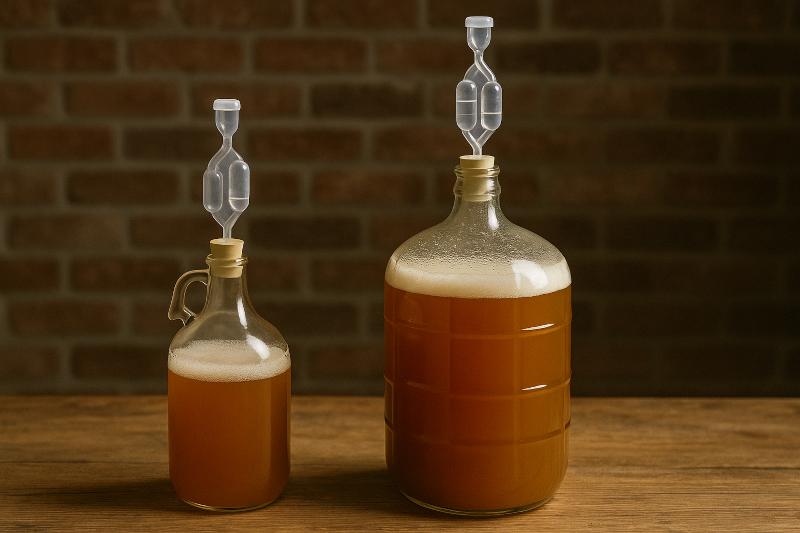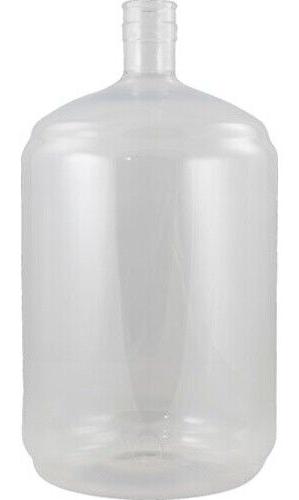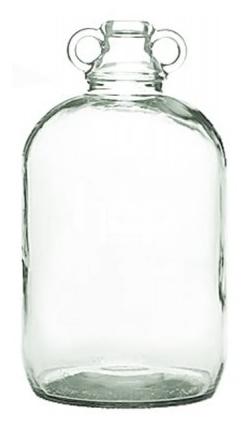Choosing the Right Fermentation Vessel: Demijohn vs Carboy
When you’re just starting out in home brewing, choosing the right fermentation vessel is more important than you might think. I remember using an old glass demijohn from my teenage wine-making days — the rosehip wine came out tasting like firewater! The vessel was clunky and fragile, yet somehow magical. Fast forward a few decades and I have brewed with both demijohns and carboys, each with their own quirks and advantages. In this guide, we’ll explore the differences between demijohn vs carboy, so you can make the right decision for your brew style, batch size, and confidence level.

What Are Demijohns and Carboys?
Demijohns – A British Staple
Demijohns are a familiar sight in UK home brewing circles, particularly among wine and cider makers. These glass vessels usually hold around 1 gallon (4.5 litres) and have a narrow neck. They have a long-standing reputation as an accessible option for small-batch fermentation.
That’s how I got started — mainly because they were cheap, easy to find and not too intimidating. For anyone wanting to try their hand at brewing wine or cider, demijohns offer a classic starting point.
Carboys – The Bigger Cousin
Carboys typically range in size from 5 to 6 gallons (23 litres) and are common in North American home brewing. They are becoming increasingly popular in the UK, particularly among beer brewers. They are available in both glass and PET plastic and are more robust in terms of volume, but require more effort to handle.
I first started using a plastic carboy when I graduated from tweaking wine kits to brewing full 5-gallon beer kits. I was surprised by how much easier the PET versions were to manage compared to my old, fragile glass demijohn.
Key Differences Between Demijohns and Carboys
Size and Batch Volume
Demijohns are ideal for:
- Small experimental batches
- Wine and cider
- Learning without committing to a full brew day
Carboys, on the other hand, are perfect if you’re:
- Brewing full-sized beer kits (5 gallons / 23L)
- Scaling up production
- Managing secondary fermentation of larger batches
Material and Weight
Demijohns are almost always made of glass, which is great for visibility, but not ideal if you have a tiled kitchen floor and clumsy hands (ask me how I know!). Carboys, on the other hand, come in both glass and plastic versions. PET ones are:
- Lightweight
- Safer for beginners
- More resistant to accidental knocks
I got tired of the constant anxiety around glass breakage, so plastic carboys were a game-changer for me.
Handling and Cleaning
While smaller vessels like demijohns are easier to clean overall, the narrow neck can make scrubbing challenging. I’ve used a bottle brush countless times.
Carboys, especially glass ones, are heavier and harder to clean, but investing in a good carboy brush or bottle washer can make a big difference. Nowadays, I always make sure my setup includes a proper siphon and spray wand to save time and reduce stress.
Cost and Availability in the UK
Demijohns are widely available from retailers such as Amazon UK, homebrew shops and second-hand marketplaces. Rest in peace, Wilko, where I bought my first ‘proper’ wine-making kit. They’re also budget-friendly.
Carboys cost more initially and are slightly harder to find in the UK, but if you’re brewing full-sized batches, they’re a worthwhile long-term investment. I bought my first PET carboy on Amazon, and it’s still going strong.
Best Use Cases for Each Vessel Type
Choosing the best vessel for brew is key to a successful fermentation.
Choose a demijohn if:
- You’re just starting out with wine or cider
- You want to experiment with new yeast strains or recipes
- You need something compact and cost-effective
That first wine batch I made in a demijohn might not have been delicious, but it sparked a lifelong obsession with fermentation.
When to Choose a Carboy
Go for a carboy if:
- You’re brewing standard 5-gallon beer kits
- You want to avoid oxidation in larger batches
- You’re ready to upgrade your equipment
These larger vessels are particularly useful when tackling specific styles that benefit from stable temperature control, such as crisp lager beers or complex ales. When I made my first full batch using a Guinness-style kit, I was shocked at the results when I used a PET carboy. The beer had burnt, roasty flavours and was very drinkable — it felt like a real step up from those early days.
Glass vs Plastic: A Side Discussion
Pros and Cons of Glass Vessels
Pros:
- Clear visibility of fermentation progress
- Doesn’t scratch easily
- Odour-resistant
Cons:
- Heavy and fragile
- More expensive upfront
Pros and Cons of Plastic (PET) Vessels
Pros:
- Lightweight and durable
- Safer to move and store
- Ideal for beginners
Cons:
- Prone to scratches over time
- Can hold onto odours if not cleaned properly
I now use both types of container, depending on the batch. I use PET for fast-drinking NEIPAs and glass for longer-aging brews.
Accessories You’ll Need (Regardless of Vessel Type)
- Airlocks and bungs (make sure they match your vessel’s neck size)
- Siphoning kit or auto-siphon
- Sanitising solution (this step can’t be skipped—I’ve learned the hard way!)
- Racking cane or bottling wand
Most of the time spent brewing isn’t actually spent boiling or fermenting; it’s spent cleaning. I spend most of my brewing time preparing and scrubbing.
Demijohn vs Carboy – At a Glance
| Feature | Demijohn | Carboy |
|---|---|---|
| Typical Size | 1–5 litres | 5–23 litres |
| Material | Glass | Glass or PET plastic |
| Best For | Wine, cider, tests | Full beer batches |
| Portability | Easier | Heavy |
| Cleaning | Moderate | Tricky for beginners |
| UK Availability | High | Medium |
| Cost | ££ | £££ |
Recommendations Based on Your Brewing Goals
- Just starting with wine or cider? → Go with a 1-gallon demijohn.
- Want to brew full 5-gallon beer kits, perhaps from one of the many excellent lager kits available? → Invest in a 23L carboy.
- Want to experiment without risk? → Use a plastic PET carboy.
- Tight on space? → Demijohn wins for compactness.
Recommended Starter Options:
Conclusion
The right choice between a demijohn and a carboy depends on your batch size, brewing goals and storage space. Both vessels have their uses, and most homebrewers (including me) end up owning both. Selecting the right fermentation vessel is key to any brewing process, whether you’re making beer or a simple home brew cider.
Whether you’re making your first cider or brewing a 5-gallon NEIPA, choose the vessel that best meets your current needs — and upgrade when you’re ready.
Check out my guides on fermentation tips, cleaning and sanitising gear, and building your first home brew setup.
FAQs – Demijohn vs Carboy for UK Home Brewers
Q1: Can I use a demijohn for beer brewing?
Yes, but only for small batches or secondary fermentation. They’re not ideal for 5-gallon kits.
Q2: Is plastic safe for fermentation?
PET plastic is food-grade and commonly used for fermentation. Just avoid scratches.
Q3: What size vessel should I use for a standard beer kit?
A 23L (5-gallon) carboy is the right fit for most UK beer kits.
Q4: Where can I buy carboys in the UK?
Try Amazon, The Home Brew Shop, or your local brew supply store.
Q5: Are demijohns still good for wine making?
Absolutely—they’re a UK home brew classic for a reason.
Q6: How long can I leave my brew in a demijohn or carboy?
Typically 2–4 weeks, depending on style. Just avoid leaving it too long on the yeast.
Q7: Can I ferment in a carboy without a bucket?
Yes. Carboys can serve as primary fermenters if fitted with the right airlock and bung.


